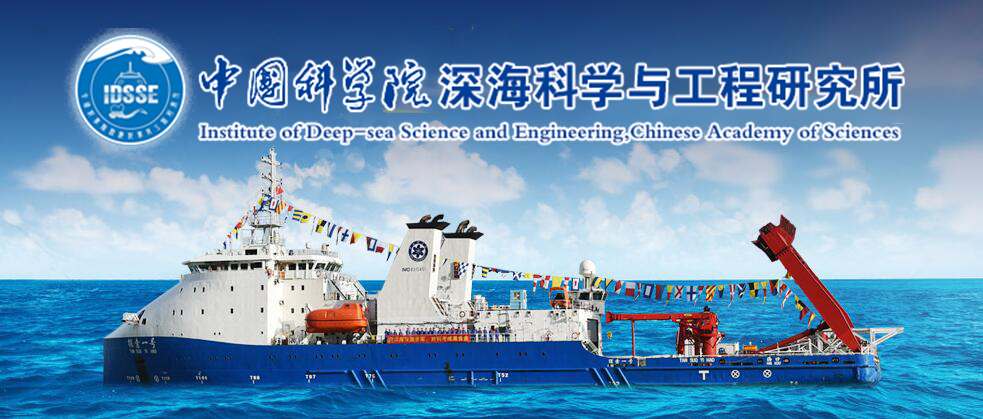
| 论文题目 | Genomic Insights into Niche Partitioning across Sediment Depth among Anaerobic Methane-Oxidizing Archaea in Global Methane Seeps |
| 论文题目(英文) | Genomic Insights into Niche Partitioning across Sediment Depth among Anaerobic Methane-Oxidizing Archaea in Global Methane Seeps |
| 作者 | Chen, Jiawei(1,2,3);Li, Yingdong(1,2,3);Zhong, Cheng(1,2,3);Xu, Zhimeng(1,2,3);Lu, Guangyuan(1,5);Jing, Hongmei(4);Liu, Hongbin(1,2,3) |
| 发表年度 | 2023-03 |
| 卷 | 1 |
| 期 | |
| 页码 | 1 |
| 期刊名称 | MSYSTEMS |
| 摘要 | |
| 摘要_英文 | Marine sediments are important methane reservoirs. Methane efflux from the seabed is significantly restricted by anaerobic methanotrophic (ANME) archaea through a process known as anaerobic oxidation of methane (AOM). Different clades of ANME archaea occupy distinct niches in methane seeps, but their underlying molecular mechanisms still need to be fully understood. To provide genetic explanations for the niche partitioning of ANME archaea, we applied comparative genomic analysis to ANME archaeal genomes retrieved from global methane seeps. Our results showed that ANME-2 archaea are more prevalent than ANME-1 archaea in shallow sediments because they carry genes that encode a significantly higher number of outer membrane multiheme c-type cytochromes and flagellar proteins. These features make ANME-2 archaea perform direct interspecies electron transfer better and benefit more from electron acceptors in AOM. Besides, ANME-2 archaea carry genes that encode extra peroxidase compared to ANME-1 archaea, which may lead to ANME-2 archaea better tolerating oxygen toxicity. In contrast, ANME-1 archaea are more competitive in deep layers than ANME-2 archaea because they carry extra genes (mtb and mtt) for methylotrophic methanogenesis and a significantly higher number of frh and mvh genes for hydrogenotrophic methanogenesis. Additionally, ANME-1 archaea carry exclusive genes (sqr, TST, and mddA) involved in sulfide detoxification compared to ANME-2 archaea, leading to stronger sulfide tolerance. Overall, this study reveals the genomic mechanisms shaping the niche partitioning among ANME archaea in global methane seeps.IMPORTANCE Anaerobic methanotrophic (ANME) archaea are important methanotrophs in marine sediment, controlling the flux of biologically generated methane, which plays an essential role in the marine carbon cycle and climate change. So far, no strain of this lineage has been isolated in pure culture, which makes metagenomics one of the fundamental approaches to reveal their metabolic potential. Although the niche partitioning of ANME archaea was frequently reported in different studies, whether this pattern was consistent in global methane seeps had yet to be verified, and little was known about the genetic mechanisms underlying it. Here, we reviewed and analyzed the community structure of ANME archaea in global methane seeps and indicated that the niche partitioning of ANME archaea was statistically supported. Our comparative genomic analysis indicated that the capabilities of interspecies electron transfer, methanogenesis, and the resistance of oxygen and hydrogen sulfide could be critical in defining the distribution of ANME archaea in methane seep sediment. Anaerobic methanotrophic (ANME) archaea are important methanotrophs in marine sediment, controlling the flux of biologically generated methane, which plays an essential role in the marine carbon cycle and climate change. So far, no strain of this lineage has been isolated in pure culture, which makes metagenomics one of the fundamental approaches to reveal their metabolic potential. |

Copyright © 中国科学院深海科学与工程研究所 备案证号:琼ICP备13001552号-1
 琼公网安备 46020102000014号
琼公网安备 46020102000014号
地址: 三亚市鹿回头路28号 邮编:572000 网站维护:深海所办公室 邮箱:office@idsse.ac.cn